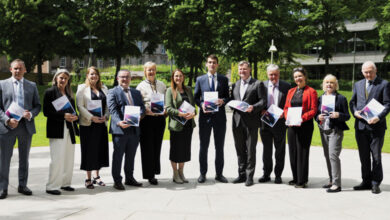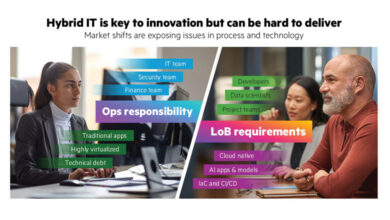How Revenue uses AI to improve the user experience

Vincent Duffy, Chief Technology Officer at Revenue, tells eolas Magazine how embedding AI in the organisation’s processes self-empowers staff, increases efficiency, and improves the user experience.
Duffy says Revenue has approximately 1,500 tax and duty manuals, and administers around 75 taxes and duties, so “no one person is an expert in all and sundry”. This delays staff in responding to customer queries. To address this, the Government agency has used an AI-enabled document processing technology called RevAssist since June 2024. Staff enter a question into RevAssist which produces a short reply based on the organisation’s 1,500 manuals.
Duffy adds: “The key thing is, it also quotes the source documents. We do not allow it to go out to the big bad world to pull out tax guidance from HMRC or IRS. We confine it within our own knowledge base and therefore the answers are appropriate and up to date.”
Additionally, Revenue has established a “feedback loop” through which staff can record instances when the system is inaccurate so it can be fine-tuned through prompt engineering. Duffy also outlines the importance of “good document governance”.
“Our advice is only make well-curated data available to your AI models because, if you put in draft 0.1, 0.2, 0.3, the AI will interrogate it, it will read it, and it will take it as gospel.”
Duffy asserts that the “natural follow-on” from using AI to interpret these documents is to use it to draft them which Revenue began to explore in Q4 2024. As they are complex documents based on legislation, Duffy says: “Our intention is that AI will not produce the final document. Human intervention is going to be required.”
“A programme is for life, not just for Christmas. You have put this technology in place and now you are going to have to babysit it.”
Vincent Duffy, Chief Technology Officer at Revenue
The Chief Technology Officer says the organisation has used AI internally to “interrogate vast swatches of technical documentation” as a use case for AI. He reveals it has piloted several sandboxed LLM models which will be used for staff queries.
“But our data does not go beyond our own boundary which is key in the sense of terms and conditions,” he says.
Empowering staff
Duffy asserts that Revenue wants to empower staff through a self-service hub so staff can utilise AI by interpreting, creating, and uploading documents. He indicates that his hub will be subject to a test and compliance process.
Additionally, Revenue is using AI to process unstructured data such as photographs of receipts and invoices from customers. He explains that the technology used is similar to mainstream OCR technology which can be used to translate documents. The agency also provides self-service scanning options that enables staff to convert physical documents to digital.
“It is all aimed at speeding up the process and taking a risk-based approach to processing an accompanying paper,” says Duffy.
Customer service
On customer service, Duffy says: “Customer service is a huge thing for Revenue. We have about 35 telephone lines, we take in about 2.5 million phone calls per year, and process about 1.5 million queries electronically through our MyEnquiries portal. Processing and moving them around a vast organisation has always been a challenge for us.”
Previously, navigating the MyEnquiries portal was “really confusing” for customers according to Duffy who says taxpayers only used it correctly “between 45 and 65 per cent of the time”. The use of a natural language processing model which processes the query and directs the customer has seen the success rate rise to between 94 and 97 per cent.
Duffy traces how the agency aims to improve phone line customer service by using bots and AI technology. The current process requires customers to wait on the line before staff can take their call. They are then asked to answer a security question and detail the reason for their call.
Duffy asserts that a bot could be deployed to do this as the customer waits on the line. This information will be given to the staff member who is primed to answer the customer, further expediting the process. Generative AI could also be used to create a short summary of the call to be stored on record, Duffy states.
Governance
On governance, the CTO asserts: “It is all caveated on the premise that it must go to a human for working afterwards. We have no intention of making our AI make automatic decision about a taxpayer.”
He explains that the organisation has produced an approach to AI governance informed by EU documents such as Ethics Guidelines For Trustworthy AI and public sector guidelines such as Guidelines for the Responsible Use of Artificial Intelligence in the Public Service.
Duffy advises organisations to begin trialling AI to create protocol for its use. The CTO also stresses the importance of understanding the terms and conditions of third party products. He asserts that organisations must have full control of their data. Concluding, Duffy says: “A programme is for life, not just for Christmas. You have put this technology in place and now you are going to have to babysit it.”





